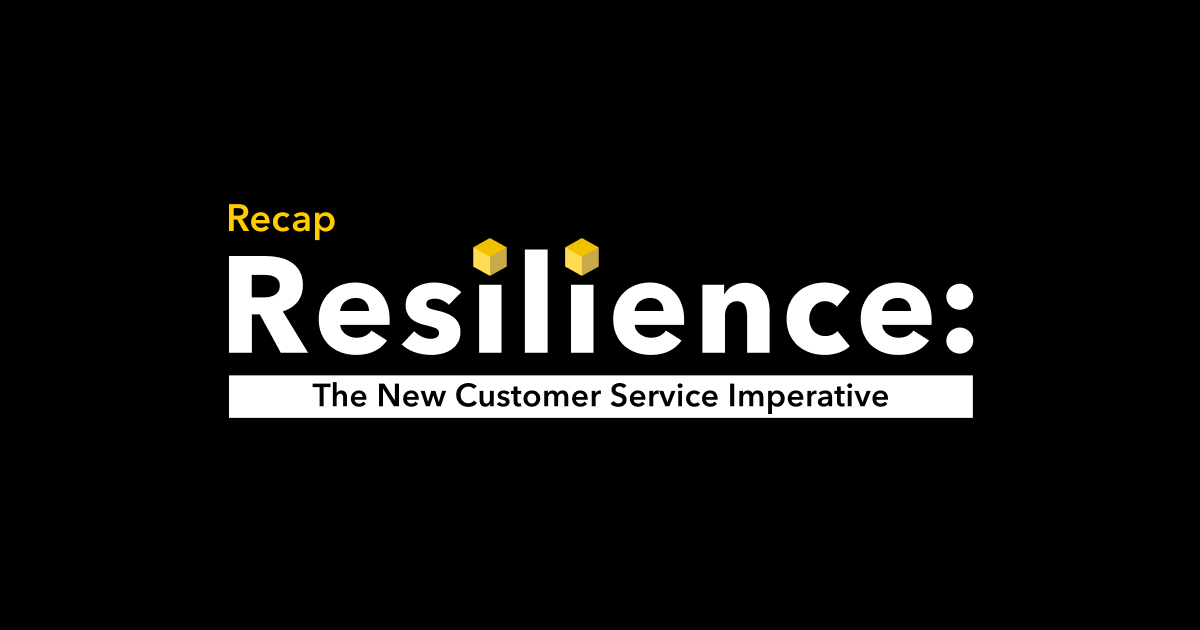Change is hard — at any scale. While very few would deny the importance of digital transformation today, execution can be painfully difficult. It takes an ongoing commitment throughout an organization to truly transform — especially when you have layers of analog infrastructure created over decades of doing business.
Customer service, the industry we serve, offers a great illustration of why the challenge of digital transformation is bigger than simply implementing new technology. Some of the most influential and progressive brands in the world have had a hard time breaking their dependence on the telephone as the center of customer service. As our head of product recently wrote, “when you have an entire culture — and decades of history — built upon customer support call centers, going digital is a massive shift.”
Meanwhile, even for companies that are eventually successful in their digital transformation, there are missteps. Based on the first-hand experiences of our team — and the many conversations we have with our customers — here are the top reasons why digital transformation in customer service fails.
Super-sized projects don’t deliver fast enough
We’ve seen this many times: Executive teams sign off on digital transformation as a strategy and commit to a gigantic investment to a mega project with complex dependencies and timelines that extend for many months, or even years. When there isn’t some immediate positive reinforcement that the project is positively impacting business, the initiative loses momentum. Meanwhile, if the business environment changes, it’s all too easy for leadership to pull the plug.
Like many technology projects, digital transformation should start small. Pick an area of focus. Unpack and unbundle the different needs of different groups. Establish a pilot program. Get a small win. Then another. Build momentum. As momentum grows, that’s the time to look at broader initiatives.
“In most cases, digital transformations do not start with an organization-wide plan of change, but rather with a series of micro-revolutions,” writes Microsoft’s Anand Eswaran. “These are small, quick projects that deliver positive business outcomes and accrue to the digital dream. Once complete, the company moves on to the next.”
Leaders get over-excited by technology — and lose sight of the problem
Anyone who works in technology naturally, gets excited about new technology. Deep down, we’re all tech nerds that can’t wait to try different things. There’s often a rush to implement new technology because of its promise. In fact, sometimes peer pressure seeps into the boardroom leading to a company overinvesting too early in a technology. Meanwhile the business case for why a company invests in a technology is neglected, or never thoroughly defined. Executives buy into a solution without really understanding the problem it solves.
When it comes to digital transformation in customer service, there are many different technologies that solve different types of problems. That’s why we always start our discussions with potential customers by focusing on their specific business problems. AI is exciting — and the fact that AI is a big part of our solution is pretty cool. But AI alone doesn’t solve our customers’ challenges. That ultimately comes down to how we implement it — and the human effort to help train the AI over its lifecycle (more on that later).
Undefined business goals and success metrics
Along with targeting specific business problems, digital transformation projects should have very clear success metrics. New projects each should have specific measurable goals. We recommend taking a lean approach to digital transformation — write a testable hypothesis for how you think a given project will positively impact your business. Then follow the Lean Startup’s build-measure-learn approach. Taking the time to understand how you’ll measure success will often help steer your technology decisions.
In customer service, a digital project hypothesis might be something like: If we move a specific percentage of support instances from the phone to digital, we’ll reduce support costs X% and improve customer satisfaction by Y%. This was our approach when we worked with a leading telco to transition some of its Android call volume away from its IVR system and into digital. We started with a pilot with clear metrics. We exceeded those measurable goals — then extended the program with a broader rollout.
Unclear path from pilot to full-scale implementation
Starting with small pilots is a great start. But while scoping those projects, there’s one more important step: planning for success. If the pilot is successful, what then? How will your project scale? There’s no sense in investing time and resources in a pilot if there’s no path to a broader rollout.
After a 2019 study on digital transformation, MIT researchers Thomas H. Davenport and George Westerman concluded (via Harvard Business Review), “Most of the leaders we surveyed (companies representing 17 countries and 13 industries) reported poor returns on their digital investments. The primary reason: unsuccessful efforts to scale digital innovations beyond early pilot work.”
Understanding the path from pilot to full-scale implementation could impact your technology choices — along with the entire approach to the project. So, plan for success in your pilot and understand how you will take it to the next level as part of your digital transformation.
Failure to plan for total cost of ownership
All too often project leaders and the executives that sign off on digital transformation investments fail to plan for total cost of ownership. You don’t just launch and move on. Depending on the type of digital project, you’ll likely need ongoing resources to monitor and optimize performance, and train teams on how to use it.
This is especially true in customer service. Many leaders are understandably eager to automate portions of customer service, especially after COVID-19 shuttered global brick-and-mortar contact centers and decimated phone service for many companies. Always-on AI-powered automation can provide customers immediate answers and take the burden off of human agents. But you can’t just flip a switch, turn on automation, and be done with it.
AI needs to be trained. Customer issues are constantly evolving. And businesses and their products evolve. Automation must continuously evolve with it through ongoing development and training. (Learn how we take much of the lifecycle burden off of our client’s internal teams by tapping the Directly expert network).
Digital transformation takes a lifetime commitment.
Lack of dynamic digital content
Another mistake companies often make when they try to digitally transform customer service is a lack of digital content. You can’t successfully automate customer service if you don’t have enough answers in a digital format.
This lack of content is one of the biggest killers to any AI initiative. As we wrote in a past post, “resource-challenged internal teams tasked with writing language libraries will have a hard time generating enough written copy to account for all the ‘edge case’ questions that may come up.”
Whether content is served up via AI automation or a self-service knowledge library, customer service leaders need resources to scale their answer database. It’s not enough to simply answer all of today’s top questions. You need to have a process for how to capture and answer questions that arise tomorrow and beyond. Like with digital technology, companies need to view their digital content as an ongoing project. Answers have a lifecycle, too.
Getting bogged down by legacy
One of the biggest challenges of digital transformation is breaking free of legacy systems and processes. Companies that have been doing things one way for years must be able to adapt, but it’s not easy. To truly transform digitally, company leaders must be willing to decommit from past investments.
As Harvard Business Review put it, “digital is not just a thing that you can buy and plug into the organization.… It requires foundational investments in skills, projects, infrastructure, and often, in cleaning up IT systems.“
As I mentioned before, companies have had a hard time deemphasizing the old analog telephone in their efforts to modernize the call center. It’s not just about the phone, rather the phone’s relationship to surrounding technology, the people who are trained on that system, and the process for how companies serve up support. As Jason Todd wrote, “we’ve heavily invested in phone-based systems for decades — and we can’t quite break away from it even though we know we probably should.” (As it turns out, Jason thinks COVID-19 may actually help break our dependence on the phone.)
Leadership fails to support necessary culture change
Successful digital transformation requires commitment from people at every level of an organization. When you have an entire culture — and decades of history — built upon an analog approach to business, going digital can be a seismic shift. Job roles, people processes, and culture must change.
Like the technology, the requisite people culture change should be considered early in every digital project. That means leadership needs to have sometimes difficult discussions about how people’s roles may change during digital transformation.
As MIT’s Davenport and Westerman wrote, digital transformation “requires mixing people, machines, and business processes, with all of the messiness that entails. It also requires continuous monitoring and intervention, from the top, to ensure that both digital leaders and non-digital leaders are making good decisions about their transformation efforts.“
Despite these eight common pitfalls, embarking on your digital transformation shouldn’t feel daunting or unachievable – with the right strategy and partners, it can be done quickly and effectively.
________________________
About Directly
Directly helps companies such as Microsoft, Samsung, Airbnb, and Autodesk accelerate digital transformation in customer service. Our platform integrates with existing customer support channels, using a mix of AI/machine learning and human support to understand customer issues, automate common solutions, and engage community experts. Directly enables customer support leaders to resolve customer issues and boost customer satisfaction, while saving millions per year. Contact us to set up a demo of our platform today.



